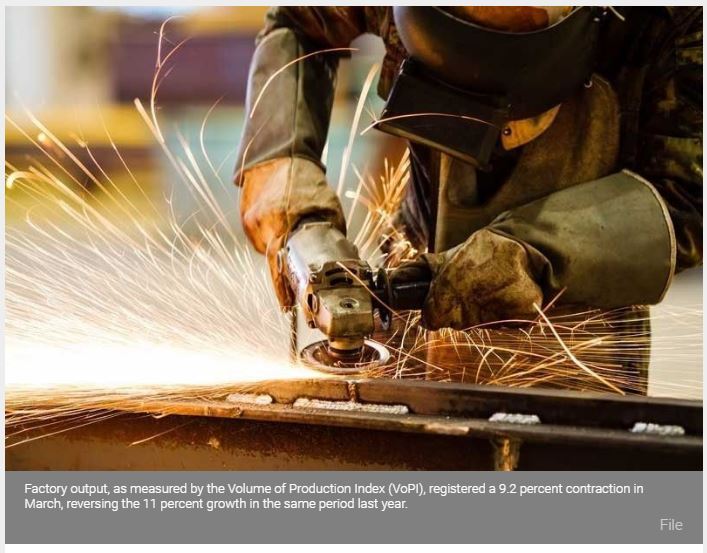Philippines: Manufacturing output drops in March; more factories operate below capacity
MANILA, Philippines — Manufacturing output declined both in terms of volume and value in March mainly due to decreased activity in the food, furniture, basic metals and petroleum sectors, the Philippine Statistics Authority (PSA) reported yesterday.
Factory output, as measured by the Volume of Production Index (VoPI), registered a 9.2 percent contraction in March, reversing the 11 percent growth in the same period last year.
PSA attributed this to the decline in eight major industry groups led by furniture and fixtures, food manufacturing and petroleum products.
The Value of Production Index (VaPI) likewise declined by 5.4 percent, reversing the growth of 10.5 percent in March 2018.
PSA attributed this to declines in the indixes of food, petroleum products and basic metals.
In March, manufacturing facilities operated at an average capacity utilization rate of 84.4 percent, with around half of establishments operating below the national average capacity.
The National Economic and Development Authority (NEDA) expects manufacturing activity to pick up in the second quarter of the year.
“We expect the figures to improve in the coming months as we see increase in demand during summer, given the rise in the number of local and foreign tourists, easing of inflation and increase in election-related spending. Government spending on infrastructure and other government services is also likely to catch up,” said Socioeconomic Planning Secretary and NEDA chief Ernesto Pernia.
He acknowledged, however, that manufacturers face several hurdles as the prevailing El Niño that can result into higher power and water rates, which are essential inputs into the manufacturing sector.
“Fortunately, forecasts point to El Nino weakening starting May to August this year,” Pernia said.
Export-oriented manufactures especially those producing electrical machinery, remain muted, and are more affected by external headwinds because of the subdued global outlook on semiconductors projected to grow by only two percent this year, he said.
To help boost manufacturing activity, Pernia said the extension of implementation and payments for 2019 infrastructure projects beyond the fiscal year must be considered in the enforcement of the cash-based budgeting system.
“An immediate implementation of a catch-up plan after the passage of the 2019 budget must be pursued to regain the government’s spending momentum. This should, at the same time, counter the impact of the temporary interruption in the implementation of new and ongoing projects as well as funding for social services,” Pernia said.
To address losses in food manufacturing, Pernia said delays in the processing and issuance of clearances, permits and required certifications by food safety regulatory authorities must be addressed.
Source: https://www.philstar.com/business/2019/05/08/1915881/manufacturing-output-drops-march-more-factories-operate-below-capacity#xhPLTGOEzdul9E1E.99


 English
English




